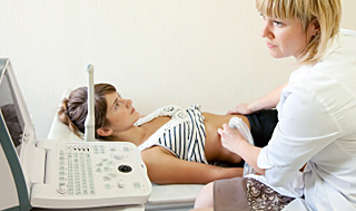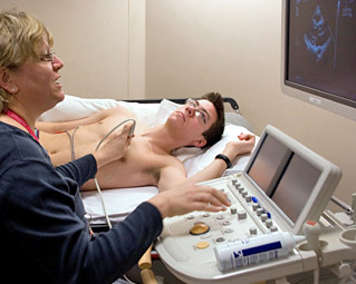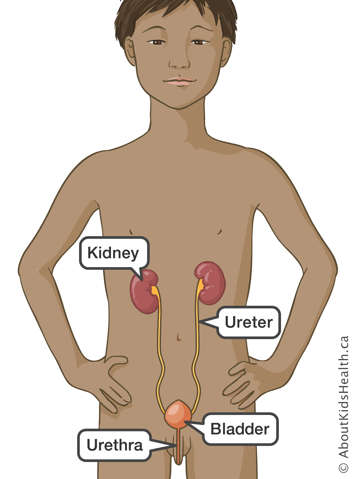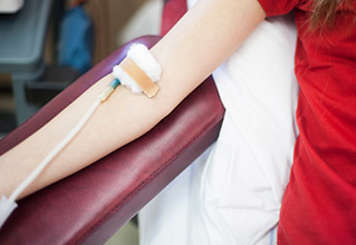Your transplant team will do a number of tests to make sure that you are ready for a transplant and that a transplant is the right option for you.
Most of the tests during your assessment do not hurt. But if you find some of the tests uncomfortable or painful, you can check our suggestions for coping with painful procedures. You might have talked to the child life specialist about these coping methods or have questions for the specialist when you meet them during your assessment.
Essential tests during a kidney transplant assessment
Blood and urine tests
Your assessment will involve lots of blood and urine tests. Some tests tell how well the kidneys are working, others tell how well the liver is working and how healthy your bones are and still more will check how well your blood clots.
Your blood will also be tested for viruses that you may have been in contact with over the years. Everyone is checked for the HIV or AIDS virus. Your blood will also be checked for sexually transmitted diseases and hepatitis.

Ultrasound and Doppler
An ultrasound scan is a test that uses sound waves to take pictures of what is inside your body. These pictures show the size, shape and texture of your kidneys, gallbladder, liver and bladder.
Another part of the exam, the Doppler, will look at the blood vessels around your kidneys to make sure they are healthy and working well.
Flow rate and post-void residual test
It is important to know exactly how well your bladder works before you have a kidney transplant. The flow rate and post-void residual test tells how much and how quickly you urinate (“pee”) and how well your bladder empties.
You will have this test with a full bladder. You will be asked to “pee” into a special toilet that will measure the volume and speed of the urine flow. An ultrasound of the bladder will then be done to see if any urine is left.
Renal osteodystrophy (ROD) series and bone age test
Kidney disease can affect how your bones develop. A ROD series and bone age test are a set of x-rays of the ankles, wrists and knees to show how kidney disease has affected your bones. This test will also give information about how well your bones are developing.
Electrocardiogram (ECG)
An ECG measures the electrical activity of your heart (such as the strength of your heartbeat) on a graph. The test tells your doctor:
- your heart rate (heartbeat)
- if your heartbeat is regular or not
- the size of your heart muscle.
The test takes about 10 minutes. It involves putting 13 small sticky discs on your legs, arms and chest and connecting them to a machine.

Echocardiogram
An echocardiogram is like an ultrasound, but it uses sound waves (also known as sonograms) to take pictures of the size, shape and texture of your heart and how the blood flows through it. This is an important test to work out the health of your heart.
The test will take anything from 30 to 90 minutes. It is not uncomfortable, but you will have to lie still while it is being done and you will feel the pressure of the wand on your chest as it takes pictures.
If you would like to know more about what is involved in any one of the tests, please ask your transplant nurse.
Possible further tests

Voiding cystourethrogram (VCUG)
A voiding cystourethrogram is a special test using x-rays to show what happens when your bladder is full and what happens when urine (pee) leaves your bladder and flows out of your body.
"Cysto" means your bladder, “urethro” stands for the urethra (the tube in your body that pee comes from) and “gram” means picture. If your urologist is not sure how well your bladder works, they may order this test.
The test involves placing a catheter (small tube) into your bladder through your urethra. It can be uncomfortable to have this tube put in, but your nurse or the person operating the x-ray machine can help you prepare for it.
Once the catheter is in place, the technologist will fill your bladder with fluid until you feel like you really need to pee. They will then ask you to pee and will be able to see if any of the urine goes back up to your kidney instead of coming out the urethra.
Full urodynamics
You may need a full urodynamics test if your kidney has failed because your bladder is not working properly. This test will tell the doctor about the size of the bladder, the amount of pressure in the bladder and the strength of the muscle around the outlet of the bladder (called the urethral sphincter).
The test first involves placing a catheter (small tube) into your bladder through your urethra and gently inserting a small tube into your rectum (anus).
The technologist will then fill your bladder with fluid and measure the pressures inside the bladder and around the rectum. After the pressure test is finished, the tubes will be gently removed and you will be asked to pee into a special toilet.
You might feel a stinging or burning sensation when you first try to pee after the test. Drinking plenty of water after the test will make peeing more comfortable each time.
Note: If you need both a VCUG and full urodynamic study and the thought of a catheter makes you very nervous, ask your transplant team if they can do both tests at the same time with the same catheter.
Other important tests and treatments during a kidney transplant assessment

Immunizations (vaccines or “shots”)
It is very important to be fully immunized before you have your transplant. If you have not already given your immunization card to your transplant nurse or co-ordinator, make sure you bring it with you to your assessment.
Your transplant nurse or co-ordinator will tell you if you need any other immunizations. It is usually best to be as well protected as possible from all viruses before you have your transplant. After transplant, you will be unable to receive some vaccines and other vaccines might not work as well.
It can take time to get vaccines completed. For example, it can take weeks or months to get several vaccines updated. If you think you may not be up to date, talk to your main contact person in the nephrology clinic or your transplant nurse. It is never too early to get your vaccines up to date.
TB testing
In addition to vaccines, you will also need to have a two-step TB skin test: This test checks to see if you have been in contact with tuberculosis and involves two tests within four weeks. The two tests are required to make sure the result is accurate. You will notice an area on your immunization card for tuberculosis (TB) skin tests.
Electroencephalogram (EEG)
Cells in the brain use low levels of electricity to communicate with each other. An
electroencephalogram (EEG) is a test that measures this electricity over time. If there is any problem in the brain’s activity, the electrical pattern changes. This will tell your transplant team if there is anything in your brain that may cause you to have a seizure.
Please be assured that this test is done only in teenagers with a history of seizures, such as those with epilepsy.
If you need to have this test, it involves having lots of small wires taped to your head with gel. You will need to wash your hair before this test, but you cannot use any conditioner, gels or oils after washing. The test will take about 60 minutes and you will want to wash your hair when it's done!






